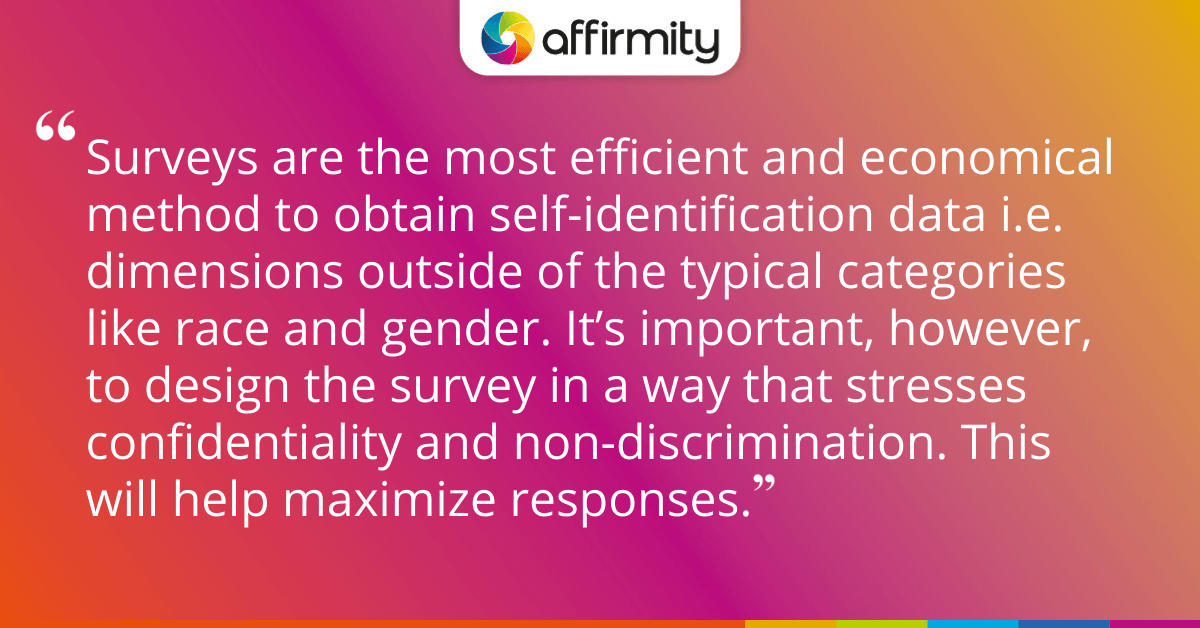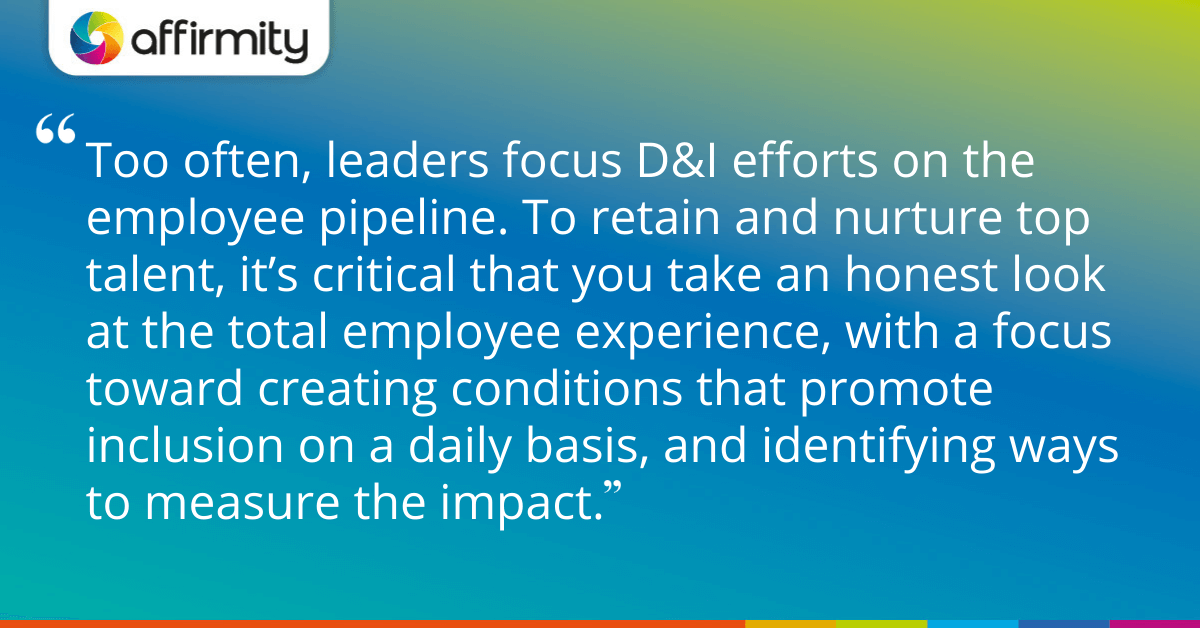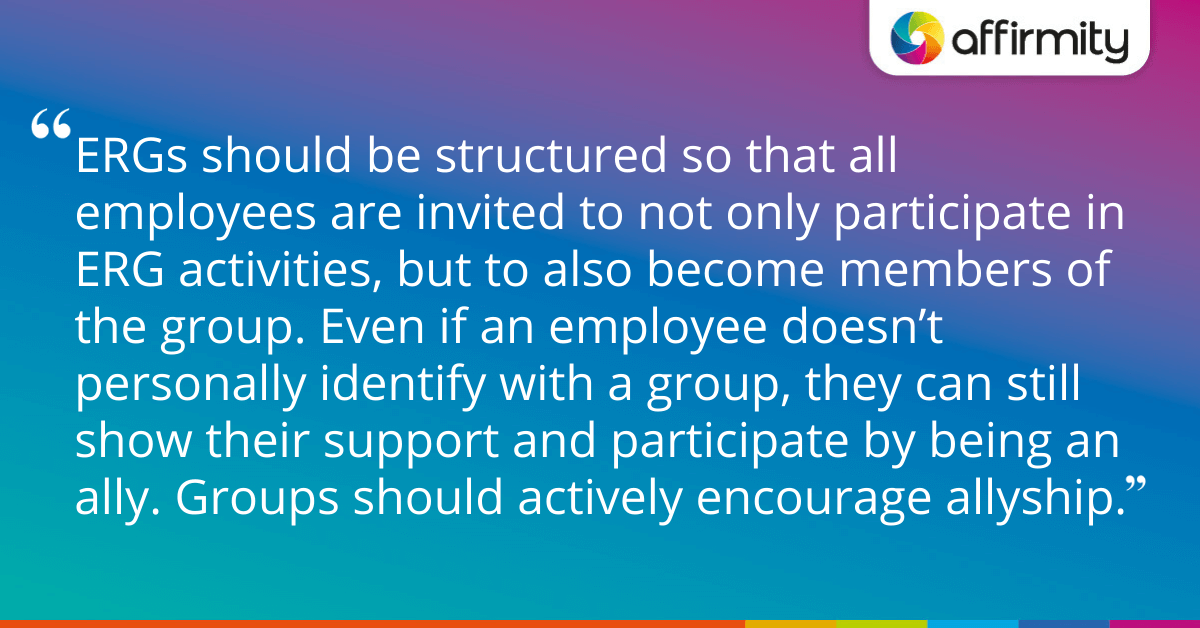Currently, American corporate life is abuzz with conversations about diversity and inclusion. How is your organization planning to respond to rising scrutiny of its ethical and commercial missions? Discover the answers to 11 key questions about D&I strategy, measurement, engagement, and communications in this article.
If your organization is considering its next step on its D&I journey, you can rest assured that you’re in good company. After our recent panel webinar, ‘Best Practices for Advancing Diversity & Inclusion Programs’ we received a deluge of questions from professionals in a variety of roles and businesses. We’ve collected them here as a wide-ranging FAQ-style guide to the many aspects of diversity and inclusion planning, and sorted them into the following categories for easy browsing:
- Defining your diversity, equity and inclusion strategy
- Measuring your progress
- Increasing engagement levels
- Communicating diversity and inclusion
Defining Your Diversity, Equity and Inclusion Strategy
What Advice Would You Provide To Companies Just Getting Started With D&I Programs?
Starting a D&I program involves six essential steps:
- Track your workforce demographics
- Assess and identify program components
- Design your D&I framework and strategy
- Measure and benchmark any progress (or lack of progress)
- Report results to key stakeholders
- Repeat the steps and make any necessary changes
To learn more about this six-step approach, see our blog ‘Moving the Needle on Strategic Diversity: 6 Steps To Advance Your D&I Program’
Does It Matter Whether the Initiative Is Called D&I or DE&I?
There’s no right or wrong way to identify your organization’s diversity and inclusion program. Whether it is called D&I (Diversity & Inclusion) or DE&I (Diversity, Equity & Inclusion) often depends on the overall organization’s mission and focus. What’s most important, is that the mission should be well-rounded and encompass efforts to not only drive an increase in diversity but also encourage an inclusive work environment.
Too often, leaders focus diversity and inclusion efforts disproportionately on the employee pipeline, forgetting that the employee experience continues well beyond onboarding. To retain and nurture top talent, it’s critical that you take an honest look at the total employee experience, with a focus toward creating conditions that promote inclusion on a daily basis, and identifying ways to measure the impact.
Facilitating equity in your organization involves providing resources to support any given individual with the assistance they need to succeed. If your program incorporates equity into its mission, it’s important to provide a clear definition of what your organization views as necessary to achieve equity.
Are Company Leaders and Colleagues Generally Receptive To Diversity and Inclusion Programs? Is There Any Pushback or Resentment?
Leaders realize the value of having a diverse workforce. They recognize that a diverse workforce is a competitive workforce because diversity increases innovation and reduces “group think”. They also believe D&I is both a business and a moral imperative—a diverse work environment offers the opportunity for employees to feel valued and respected for their unique contributions. Though there will always be outliers, where leaders lead, the wider business will follow.
Measuring Your Progress

How Can Data Help Me Define Annual Goals?
Analytics data can be used to:
- Align D&I strategy based on organizational goals and needs
- Inform strategic planning for D&I efforts
- Address bias and disparities in recruiting and succession planning
Additionally, HR and leadership can see the direct contributions of D&I initiatives to organizational goals such as innovation, recruitment, retention, and succession planning.
Also read: ‘The Vanguard of D&I: 3 Best Practices in Strategic Diversity Measurement’
Is There a Workaround for the Fluctuating Availability of Self-Identification Data?
Surveys are the most efficient and economical method to obtain self-identification data i.e. dimensions outside of the typical categories like race and gender. It’s important, however, to design the survey in a way that stresses confidentiality and non-discrimination. This will help maximize responses—individuals may fear discrimination or impact to their careers from the disclosure of certain information.
Questions should be sensitively framed, with feedback sought from individuals in the target group incorporated to avoid offense or confusion. All assurances should be given that the question will be securely handled once answered (and general details of the handling easy to obtain). For this reason, we would also caution against collecting this data during initial onboarding—some employees may need time to build trust in the organization before revealing sensitive information about themselves.
Read more on this subject: ‘Answering 11 Questions That Will Help You Use Data to Improve and Advance Your D&I Program’
Increasing Engagement Levels
How Can I Go Beyond Membership Numbers To Measure and Ensure ERG Engagement?
Engagement in Employee Resource Groups (or ERGs) is heavily dependent on the activities that the ERG plans throughout the year. The group’s activities should revolve around the mission of the ERG, goals identified as company initiatives, and programs that the members have expressed an interest in. When programs are focused on the common interests of the ERG, higher levels of engagement will usually follow.
Both member enrollment and engagement can be captured with an online management system. An ERG platform supports sophisticated metrics and generates real-time data, enabling diversity leaders to track employee resource group activities and measure engagement for a clear view of ROI.
Learn more about ERGs: ‘7 Best Practices for Maximizing the Value of Employee Resource Groups’
How Is It Possible To Counteract the Sense That ERGs Are Exclusive, Rather Than Inclusive?
ERGs should be structured so that all employees are invited to not only participate in ERG activities, but to also become members of the group. Even if an employee doesn’t personally identify with a group, they can still show their support and participate by being an ally. Members identified with the group should be encouraged to value this and actively encourage participation.
To this end, communications should be inclusive of allies. Some ERGs will also include allies as part of their name. These simple measures can create the desired ERG environment, where employees can learn from those whose identities and cultural norms are different from their own.
Do Companies or Employees Create ERGs?
Groups are generally initiated and run by employees. However, they bring significant business value as they convey a broad range of diverse perspectives that can be leveraged to advance company goals. Furthermore, recognizing and respecting the talents and contributions of all employees increases morale and maximizes retention and productivity.
If Diversity Is Limited at Executive Level, Who Do You Select To Sponsor Each ERG?
Company leaders who serve as executive sponsors don’t necessarily have to identify with the same affinity as the group they sponsor. The sponsor is required to act and be treated as an ally for the group, using their position of privileged access to advocate for proposals, and raise awareness of issues highlighted by the ERG.
Being an ally is a commitment to understanding the realities that underrepresented people face. Though the learning curve is naturally steeper than with someone with the affinity of the group they represent, having someone who is of the opposite race, gender, and even age can help increase everyone’s awareness of and appreciation for diversity.
Communicating Diversity & Inclusion
How Should a Company Effectively Address Unconscious Biases?
When considering strategies to address the problems that arise from unconscious bias, we must consider individual and institutional strategies. A company can address unconscious biases with enhanced awareness and training. Employees can learn the skills needed to identify and mitigate these hidden biases, creating an inclusive culture.
Unconscious bias training is not a ‘one and done’ event, however. It should be ongoing to ensure that the information learned is retained and put into practice. The training should be configured so that the content and approach is appropriate for the intended audience, such as all employees or the managerial team.
How Are Organizations Handling Conversations With Their White Population? How Can We Engage Employees in Honest Discussions About Race To Educate and Not Alienate?
Conversations about race in the workplace can cause feelings of anxiety and uncertainty for any group. After all, most of us have been conditioned not to mention or take into consideration someone’s race while at work. Companies should take into careful consideration how conversations are best structured and facilitated. They will need to identify employee expectations about these conversations, and to define things such as the degree to which senior leaders are expected to be involved.
Since the recent wave of protests on social and racial injustices, many companies have assembled employees via town hall meetings to discuss race in the workplace. Companies should establish a framework to guide the conversations and help ease any anxiety. Consider soliciting the help of an external diversity consultant to help structure the framework and guide the discussion.
Related reading to download today: ‘Diversity & Inclusion in High Tech: 3 Key Strategies for Promoting an Inclusive Workplace’


